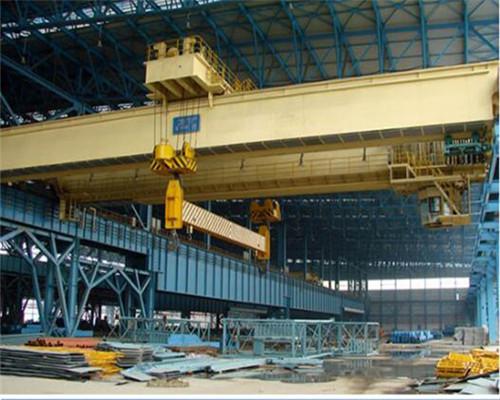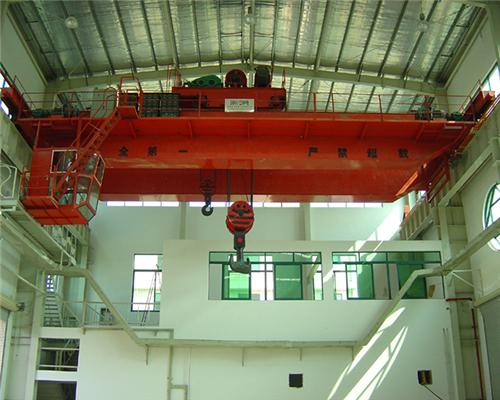Choosing an overhead crane with a lifting capacity of 50 tons is a significant decision that requires careful consideration of various factors to ensure optimal performance, safety, and efficiency in material handling operations. Whether used in manufacturing, construction, or heavy industries, the selection process for a overhead crane 50 ton involves evaluating specific criteria to match the crane with the operational requirements. In this detailed exploration, we will delve into key considerations and steps to guide the decision-making process when choosing a overhead crane 50 ton.

Assess Lifting Requirements
The first step in choosing an overhead crane with a 50-ton lifting capacity is a thorough assessment of the lifting requirements of the intended application. Consider the maximum weight of the loads to be lifted, their dimensions, and any potential future changes in the nature of the materials to be handled. This evaluation helps determine the crane’s span, lifting height, and overall design specifications required for efficient and safe material handling.
Understand Operational Environment
The operational environment plays a crucial role in selecting the right overhead crane. Consider factors such as ambient temperature, humidity, and the presence of corrosive substances. For outdoor applications, weather-resistant features may be necessary. In corrosive environments, selecting materials with anti-corrosion properties ensures the crane’s longevity. Understanding the operational environment helps in choosing a heavy duty crane that can withstand specific conditions and perform reliably over time.
Determine Duty Cycle and Frequency
The duty cycle, or how frequently the crane will be in use, is a key factor in selecting the appropriate crane. Overhead cranes are categorized based on their duty cycle, such as light-duty, moderate-duty, heavy-duty, or severe-duty. An overhead crane 50 ton typically falls into the heavy-duty or severe-duty category, indicating its ability to handle frequent and demanding tasks. Knowing the duty cycle helps in choosing a crane with the right design features and components for sustained and reliable performance.
Evaluate Crane Speed and Control
The speed at which the crane can travel, lift, and lower loads is another critical consideration. Evaluate the required speed for specific operations and ensure that the chosen crane meets those requirements. Additionally, consider the control system – whether it’s manual, semi-automatic, or fully automated. Advanced control systems with features like variable frequency drives contribute to precise load control and increased efficiency, especially when handling heavy loads.

Customization Options
Look for a manufacturer that offers customization options to tailor the overhead crane 50 ton to the specific needs of the application. This includes the ability to customize the span, lifting height, and control features. Customization ensures that the overhead crane is optimized for the unique requirements of the facility, contributing to increased efficiency and productivity.
Consider Safety Features
Safety is paramount in material handling operations, especially when dealing with heavy loads. Ensure that the overhead crane comes equipped with advanced safety features such as overload protection, emergency stop buttons, anti-sway systems, and collision avoidance technology. These features not only protect personnel and equipment but also contribute to compliance with safety regulations and standards.
Select the Right Hoist and Trolley Configuration
The hoist and trolley configuration of the overhead crane significantly impacts its lifting capabilities and versatility. For a 50-ton crane, choose a hoist and trolley system that aligns with the load requirements. Options may include single or double girder configurations, each with its advantages. Double girder cranes typically offer higher lifting capacities and greater stability, making them suitable for heavy-duty applications.
Evaluate Maintenance Requirements
Consider the maintenance requirements of the overhead crane to ensure long-term reliability and cost-effectiveness. Look for features that facilitate ease of maintenance, such as accessible components, diagnostic tools, and the availability of spare parts. Regular maintenance is crucial for extending the crane’s lifespan and minimizing downtime.
Review Manufacturer Reputation and Support
Research and choose a reputable manufacturer with a track record of producing high-quality overhead cranes. Check customer reviews, testimonials, and references to gauge the manufacturer’s reputation. Additionally, consider the level of support and after-sales services provided, including installation assistance, operator training, and timely technical support. A reliable manufacturer ensures a smooth procurement process and ongoing support throughout the crane’s lifecycle.
Compliance with Standards
Ensure that the selected overhead crane complies with industry standards and regulations. This includes standards for design, manufacturing, and safety. Compliance with standards ensures that the crane meets recognized criteria for quality and performance, contributing to a safe and reliable material handling operation.
In conclusion, choosing an overhead crane 50 ton involves a systematic evaluation of lifting requirements, operational environment, duty cycle, crane speed and control, customization options, safety features, hoist and trolley configuration, maintenance requirements, manufacturer reputation, and compliance with standards. Careful consideration of these factors ensures that the selected crane is well-suited to the specific needs of the application, contributing to efficient, safe, and reliable material handling operations. Taking the time to assess these aspects and partnering with a reputable manufacturer ultimately results in a successful investment in a high-performance overhead crane 50 ton.